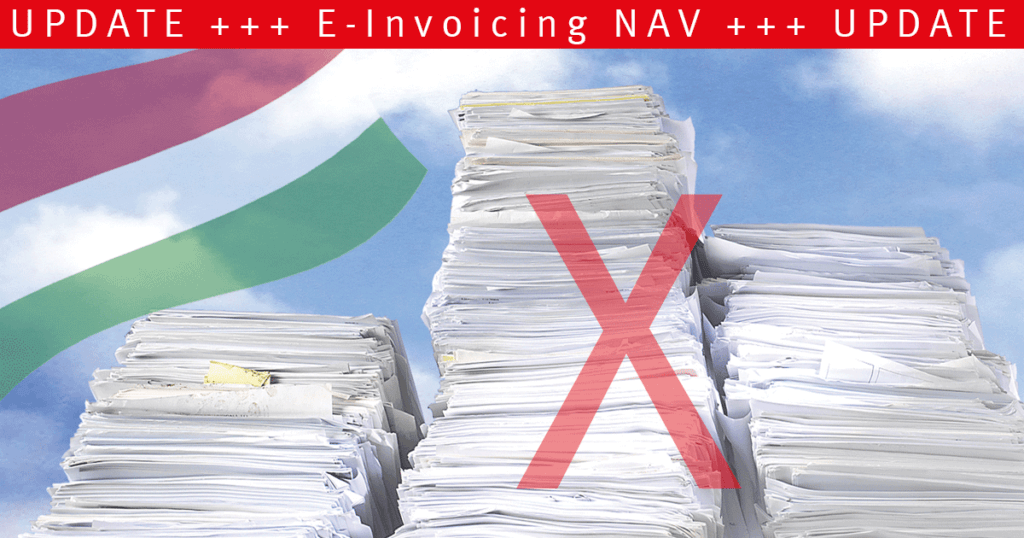Hungarian Tax Authority NAV – important changes of XML version 3.0 as of 01.01.2021

On December 1, unexpectedly just before the new version 3.0 of the NAV Online XML Invoice Schema came into effect, the Hungarian Tax Authority published new, comprehensive and binding changes for Real Time Invoice Reporting (RTIR).
Hungary e-invoice update: NAV changes effective 2021
According to NAV, these new changes are partly due to the announcements of the recently adopted new tax package by the Hungarian tax authority. The new tax package falls under the VAT Act, which, among other things, stipulates the obligation to provide data and its contents.
Also due to comments and hints from solution providers and integration partners like SEEBURGER, an adaptation of the mandatory version 3.0 was necessary.
If a company has already started preparing for the 3.0 XML changes for 2021, it should definitely check the latest version 3.0 from December 2020, as the current changes affect all billing programs and reporting modules.
The December 2020 changes should not be considered minor, so their implementation should not be underestimated. The changes are of course based on the pre-December version 3.0, but failure to adapt version 3.0 would likely result in an incorrect transfer to NAV. So there is a need for action.
Have you already upgraded to the December 3.0 version?
Take a look at the following key technical changes:
- The most important change is that the indicator for ‘private data’ in the previous version 3.0 XSD has been renamed. In this parameter the ‘customer type’ must be specified depending on whether the customer is subject to domestic VAT or is a private individual. If the customer is not a domestic taxable person and not a private person, the category ‘egyéb’ should be selected so that, for example, the foreign customer then falls into this category.
- In case the customer is subject to domestic VAT, the tax authority expects the tax number to be provided. Without the tax number, NAV will refuse to provide the data.
- The marker for the difference tax item (travel agencies, second-hand goods, works of art, collectibles and antiques) is moved to the ‘Tax rate and exemption’ node. The ‘False / True’ tax field, based on the difference between the previous withholding tax and the non-withholding tax, will thus be deleted.
- A separate field indicates that no tax has been levied under Section 17 of the VAT Act, such as in-kind services, located at the node to indicate the tax rate and exemption.
- A so-called ‘UNKNOWN’ value has been introduced for the following case: correction of an invoice reported under a previous online invoicing scheme NAV (1.0; 1.1; 2.0), which also contains a tax exempt item. This value is valid for tax exemption purposes and can be used only for change and cancellation invoices.
- According to the version of the VAT law that will apply from January next year, the exchange rate must be specified in any case when providing the online invoice data to NAV, i.e. the real exchange rate. This means that the previously technically conceivable ‘zero forint exchange rate’ can no longer be used.
For everything else about the legal requirements for VAT reporting in Hungary, see our blog post from October 16, 2020.
Webcast-On-Demand
Learn more about the Changed Legal Requirements for VAT Reporting in Hungary!
Thank you for your message
We appreciate your interest in SEEBURGER
Get in contact with us:
Please enter details about your project in the message section so we can direct your inquiry to the right consultant.
Written by: Andreas Killinger
Andreas Killinger joined SEEBURGER in 2014 and is a product manager, responsible for EDI services and software applications. He specialises in SAP solutions, as well as electronic invoicing (e-invoicing) for globally active customers. Following an apprenticeship as an industrial mechanic and a degree in law and administration, he had various roles in the public sector. He then worked for IBM as an SAP Senior Consultant and SAP Project Manager in international SAP projects from 1999 to 2013.





